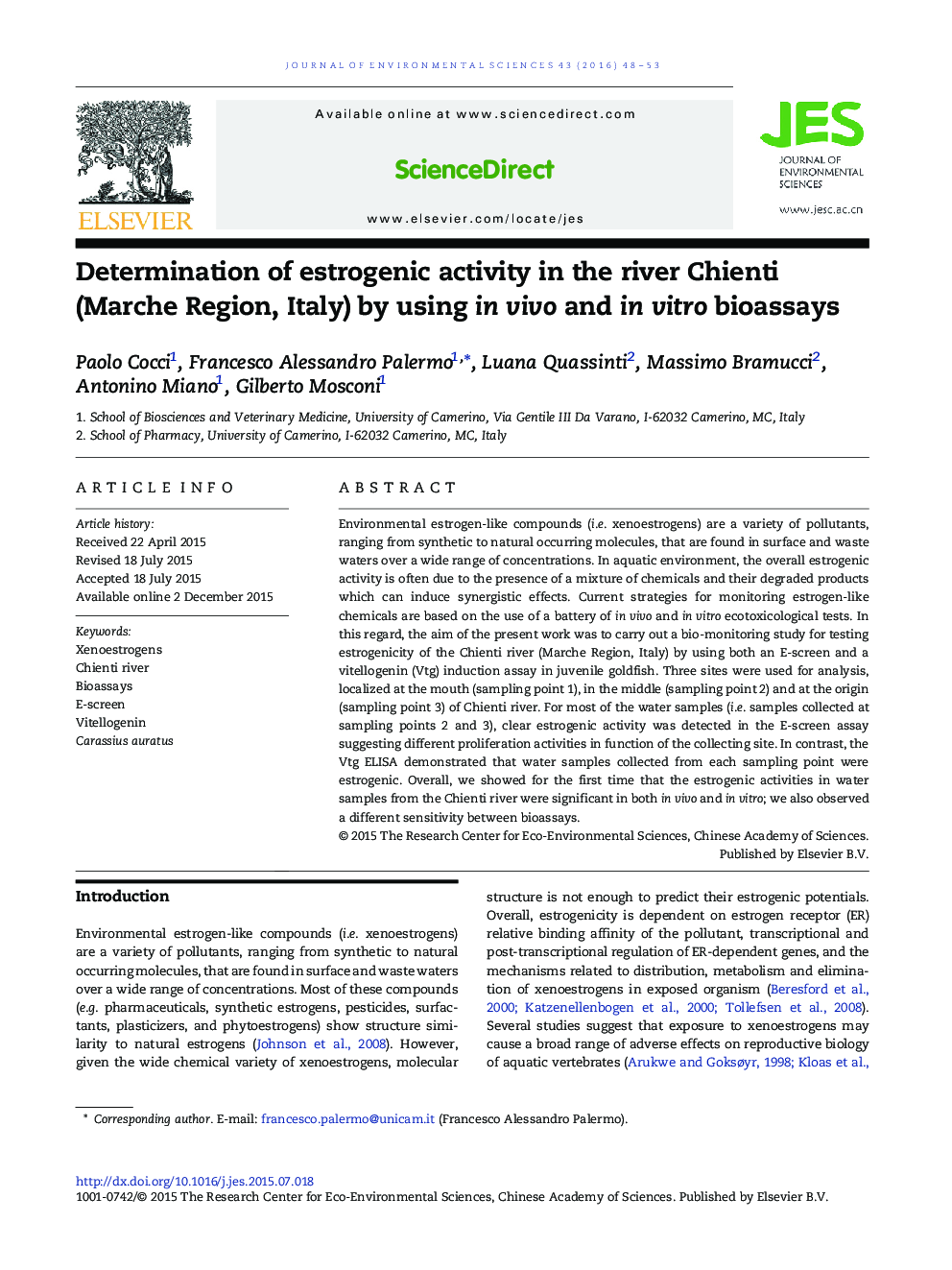| Article ID | Journal | Published Year | Pages | File Type |
|---|---|---|---|---|
| 4453655 | Journal of Environmental Sciences | 2016 | 6 Pages |
Environmental estrogen-like compounds (i.e. xenoestrogens) are a variety of pollutants, ranging from synthetic to natural occurring molecules, that are found in surface and waste waters over a wide range of concentrations. In aquatic environment, the overall estrogenic activity is often due to the presence of a mixture of chemicals and their degraded products which can induce synergistic effects. Current strategies for monitoring estrogen-like chemicals are based on the use of a battery of in vivo and in vitro ecotoxicological tests. In this regard, the aim of the present work was to carry out a bio-monitoring study for testing estrogenicity of the Chienti river (Marche Region, Italy) by using both an E-screen and a vitellogenin (Vtg) induction assay in juvenile goldfish. Three sites were used for analysis, localized at the mouth (sampling point 1), in the middle (sampling point 2) and at the origin (sampling point 3) of Chienti river. For most of the water samples (i.e. samples collected at sampling points 2 and 3), clear estrogenic activity was detected in the E-screen assay suggesting different proliferation activities in function of the collecting site. In contrast, the Vtg ELISA demonstrated that water samples collected from each sampling point were estrogenic. Overall, we showed for the first time that the estrogenic activities in water samples from the Chienti river were significant in both in vivo and in vitro; we also observed a different sensitivity between bioassays.
Graphical abstractFigure optionsDownload full-size imageDownload as PowerPoint slide
